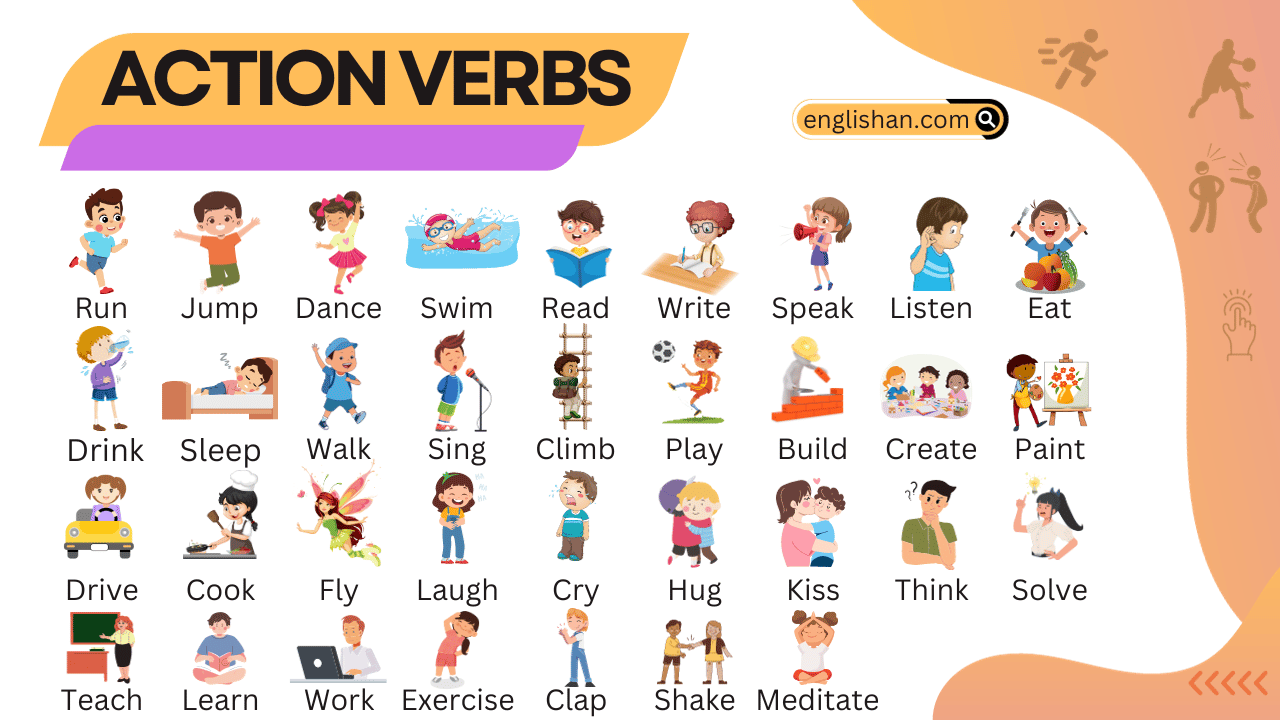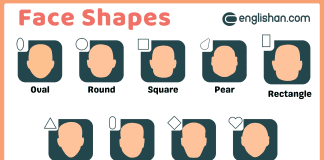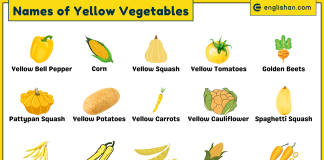Contents
In this blog post, you will learn the different types of coffee names in English. Coffee is one of the most popular drinks worldwide, and knowing its names helps in daily conversations, ordering at cafes, and understanding menus. Whether you are a coffee lover or just starting to explore coffee vocabulary, this topic will help you improve your English skills. By understanding these names, you can easily communicate your preferences and learn more about coffee culture.
For more vocabulary topics, visit our vocabulary category.
What is Coffee?
Coffee is a yummy drink made from roasted coffee beans. There are types like Arabica and Robusta. The beans can be roasted light, medium, or dark for different flavors. People make coffee by mixing hot water with ground beans. Some like it black, others add milk. Coffee has caffeine to make you feel awake. People everywhere enjoy coffee for its tasty flavors and how it brings friends together.

Types of Coffee
There are numerous types of coffee, each with its unique flavor profile, preparation method, and cultural significance. Here are some popular types of coffee:
Espresso:
- A strong and concentrated coffee shot made by forcing hot water through finely-ground coffee beans.
- Typically 1 ounce.
- Intense flavor, rich crema on top.
Americano:
- Made by diluting a shot of espresso with hot water, resulting in a coffee similar to drip coffee but with a different flavor profile.
- Varies, usually more than an espresso shot.
- Milder than espresso but retains some strength.
Cappuccino:
- Composed of equal parts espresso, steamed milk, and milk foam.
- Usually 6 ounces.
- Creamy texture with a balance of coffee and milk flavors.
Latte:
- Consists of espresso and steamed milk, often topped with a small layer of foam.
- Typically 8 to 12 ounces.
- Creamy and smooth with a mild coffee flavor.
Macchiato:
- An espresso “stained” or marked with a small amount of frothy milk.
- Usually a single or double shot of espresso.
- Bold espresso flavor with a hint of milk.
Mocha:
- Espresso mixed with steamed milk and chocolate syrup, often topped with whipped cream.
- Similar to a latte, around 8 to 12 ounces.
- Rich and chocolatey with a coffee base.
Affogato:
- A dessert-like coffee where a shot of hot espresso is poured over a scoop of vanilla ice cream.
- Typically a single shot of espresso.
- Combines the warmth of coffee with the cold sweetness of ice cream.
Flat White:
- Similar to a latte but with a higher coffee-to-milk ratio and a thin layer of microfoam.
- Typically 6 ounces.
- Strong coffee flavor with a velvety texture.
Irish Coffee:
- Hot coffee with Irish whiskey and sugar, often topped with whipped cream.
- Varies, often served in a warmed mug.
- Warm, comforting, and slightly alcoholic.
Cold Brew:
- Coffee brewed with cold water over an extended period, resulting in a smoother, less acidic taste.
- Typically served over ice.
- Smooth, full-bodied, and refreshing.
Iced Coffee:
- Chilled coffee over ice for a cool and refreshing taste.
- Typically 8 to 16 ounces.
- Cold, crisp, and customizable with sweeteners or flavorings.
Turkish Coffee:
- Finely ground coffee simmered with water (and sugar optionally), creating a strong and unfiltered brew.
- Small cups, around 2 to 3 ounces.
- Bold, rich, often with grounds settled at the bottom.
Vienna Coffee:
- Black coffee topped with whipped cream, sometimes flavored for a decadent experience.
- Typically 6 to 8 ounces.
- Indulgent, sweet, and creamy with a luxurious texture.
Romano:
- Espresso with a twist of lemon peel for a citrusy accent.
- Usually a single or double shot.
- Strong espresso with a bright and aromatic hint of lemon.
Lungo:
- “Long” espresso with more water, resulting in a milder flavor.
- Similar to a regular espresso, around 1 to 2 ounces.
- Lighter, more extended extraction, and less intense than a standard espresso.
Ristretto:
- “Short” espresso with less water, delivering a concentrated and intense flavor.
- Usually a single shot.
- Strong, robust, and less bitter than a regular espresso.
Marocchino:
- Espresso with cocoa powder and frothy milk in a small glass.
- Typically 2 to 4 ounces.
- Balanced blend of chocolate, coffee, and creamy milk.
Bicerin:
- Layered drink with espresso, hot chocolate, and frothy milk.
- Varies, often served in a small glass.
- Luxuriously layered, combining the flavors of coffee and chocolate.
Breve:
- Latte with half-and-half or cream instead of milk for a richer taste.
- Typically 8 to 12 ounces.
- Creamy, indulgent, and with a higher fat content.
Raf Coffee:
- Flavored syrup-infused Latte served in a glass.
- Typically 8 to 12 ounces.
- Sweet, aromatic, and customizable with various syrup flavors.
These descriptions provide a glimpse into the diverse world of coffee, where variations in brewing methods and ingredient combinations yield a wide range of flavors and experiences.
Types of Coffee Beans
There are several types of coffee beans, each with its unique flavor profile, growing region, and characteristics. The two main species of coffee beans are Arabica (Coffea arabica) and Robusta (Coffea canephora). Here’s an overview of these coffee beans and a few other notable varieties:
- Arabica:
- Origin: Ethiopia (possibly)
- Flavor Profile: Mild, aromatic, with a wide range of flavor notes including floral, fruity, and nutty. Generally considered higher quality than Robusta.
- Caffeine Content: Lower than Robusta.
- Growing Conditions: Requires higher altitudes, cooler temperatures, and more care, making it more susceptible to pests and diseases.
- Robusta:
- Origin: Sub-Saharan Africa
- Flavor Profile: Strong, earthy, and often described as more bitter. Contains higher levels of caffeine.
- Caffeine Content: Higher than Arabica.
- Growing Conditions: Grows at lower altitudes and in warmer climates, making it hardier and more resistant to pests.
- Liberica:
- Origin: West Africa
- Flavor Profile: Unique and distinct, often with fruity and floral notes. Some find it has a somewhat woody or smoky flavor.
- Caffeine Content: Moderate.
- Excelsa (Coffea liberica var. dewevrei):
- Origin: West and Central Africa, Southeast Asia
- Flavor Profile: Complex, with fruity, spicy, and wine-like notes.
- Caffeine Content: Moderate.
- Arabusta:
- Origin: Hybrid of Arabica and Robusta
- Flavor Profile: Combines the mildness of Arabica with the strength of Robusta.
- Caffeine Content: Moderate to high.
- Geisha (also spelled Gesha):
- Origin: Ethiopia
- Flavor Profile: Highly prized for its unique and complex flavor profile, often featuring floral, fruity, and tea-like notes.
- Growing Conditions: Thrives at high altitudes.
These are just a few examples, and within each species and variety, there can be further distinctions based on the specific growing region, climate, and processing methods. Coffee enthusiasts often explore different beans to experience a wide range of flavors in their cup.
Types of Hot Coffee Drinks
There are numerous types of hot coffee drinks, each with its own unique preparation and flavor profile. Here are some popular ones:
- Espresso: A strong, concentrated coffee shot made by forcing hot water through finely-ground coffee beans.
- Americano: Espresso diluted with hot water, resulting in a milder and larger coffee.
- Latte: Espresso with steamed milk and a small amount of foam, providing a creamy and balanced flavor.
- Cappuccino: Equal parts of espresso, steamed milk, and milk foam, creating a rich and frothy drink.
- Macchiato: Espresso “stained” or marked with a small amount of frothy milk for a bold coffee flavor.
- Mocha: Espresso with steamed milk, chocolate syrup, and topped with whipped cream.
- Flat White: Similar to a latte but with a higher coffee-to-milk ratio and a thin layer of microfoam.
- Breve: Similar to a latte, but made with half-and-half or cream instead of milk for a richer taste.
- Vienna Coffee: Black coffee topped with whipped cream, often flavored for an indulgent experience.
- Affogato: A dessert-like coffee where a shot of hot espresso is poured over a scoop of vanilla ice cream.
- Irish Coffee: Hot coffee with Irish whiskey and sugar, often topped with whipped cream.
- Turkish Coffee: Finely ground coffee simmered with water and sugar (optional) in a cezve, producing a strong and aromatic brew.
- Raf Coffee: Latte with flavored syrup, usually served in a glass.
- Cuban Coffee (Café Cubano): Strong espresso sweetened with demerara sugar for a sweet and robust flavor.
- Café au Lait: Equal parts brewed coffee and steamed milk for a simple and comforting drink.
- Red Eye: Drip coffee with a shot of espresso, providing an extra caffeine kick.
These are just a few examples, and the world of hot coffee drinks is diverse, catering to various taste preferences and occasions.
Types of Cold Coffee Drinks
Cold coffee drinks are perfect for a refreshing pick-me-up, especially on warmer days. Here are various types of cold coffee drinks to explore:
- Iced Coffee: Regular brewed coffee that is cooled and served over ice.
- Cold Brew Coffee: Coffee brewed with cold water over an extended period, resulting in a smooth and less acidic flavor.
- Nitro Cold Brew: Cold brew infused with nitrogen for a creamy and effervescent texture, often served on tap.
- Iced Americano: Espresso shots diluted with cold water and poured over ice, creating a milder coffee flavor.
- Iced Latte: Espresso with cold milk and ice, providing a creamy and cool beverage.
- Iced Cappuccino: Similar to an iced latte but with equal parts espresso, cold milk, and milk foam.
- Vietnamese Iced Coffee: Strong brewed coffee mixed with sweetened condensed milk and poured over ice.
- Iced Mocha: Espresso with cold milk and chocolate syrup, served over ice and often topped with whipped cream.
- Iced Flat White: Similar to an iced latte but with a higher coffee-to-milk ratio and a thin layer of microfoam.
- Cold Foam Cold Brew: Cold brew coffee topped with a frothy layer of cold foam, often flavored.
- Iced Cortado: Equal parts espresso and cold milk, maintaining a balanced coffee flavor.
- Coconut Cold Brew: Cold brew coffee mixed with coconut milk or coconut water, creating a tropical twist.
These cold coffee drinks provide a range of flavors, textures, and styles to suit various preferences.
Advantages and Disadvantages of Coffee
Here’s a simplified table summarizing the advantages and disadvantages of consuming coffee:
| Advantages of Coffee | Disadvantages of Coffee |
|---|---|
| Increased Alertness | Insomnia and Disrupted Sleep |
| Rich in Antioxidants | Potential for Increased Anxiety |
| Mood Enhancement | Dependency and Withdrawal Symptoms |
| Boosts Physical Performance | Staining of Teeth |
| May Lower the Risk of Certain Diseases | Digestive Issues |
| Social Benefits | Increased Heart Rate |
| May Improve Metabolic Health | Potential for Increased Blood Pressure |
| Convenience and Versatility | Potential for Dehydration |
Please note that individual responses to coffee can vary, and moderation is often key to balancing the positive and negative effects.
Quiz:
- What is the primary component of coffee?
- a) Tea
- b) Coffee beans
- Which part of the coffee plant contains the seeds used to make coffee?
- a) Leaves
- b) Cherries
- What is the role of caffeine in coffee?
- a) Calming effect
- b) Stimulant effect
- Which two main species of coffee beans are commonly known?
- a) Espresso and Cappuccino
- b) Arabica and Robusta
- What part of the coffee plant eventually develops into coffee cherries?
- a) Blossoms
- b) Leaves
- What is the primary purpose of coffee blossoms?
- a) Seed production
- b) Photosynthesis
- What is the protective layer surrounding coffee beans during processing?
- a) Hull
- b) Parchment
- Which part of the coffee plant facilitates photosynthesis?
- a) Cherries
- b) Leaves
- How does the roasting process impact the flavor of coffee?
- a) Enhances sweetness
- b) Reduces acidity
- What is the significance of the grind size in coffee brewing?
- a) Determines freshness
- b) Affects extraction rate
- What is the golden layer of foam on top of a well-brewed espresso called?
- a) Froth
- b) Crema
- Which coffee bean is known for its mild flavor and acidity?
- a) Robusta
- b) Arabica
- What is the primary function of coffee cherries in the coffee production process?
- a) Absorb sunlight
- b) Contain coffee beans
- What is the purpose of nitrogen in Nitro Cold Brew coffee?
- a) Adds sweetness
- b) Creates a creamy texture
- Which part of the coffee plant is essential for pollination to produce coffee cherries?
- a) Leaves
- b) Blossoms
Answers:
- b) Coffee beans
- b) Cherries
- b) Stimulant effect
- b) Arabica and Robusta
- b) Cherries
- a) Seed production
- b) Parchment
- b) Leaves
- a) Enhances sweetness
- b) Affects extraction rate
- b) Crema
- b) Arabica
- b) Contain coffee beans
- b) Creates a creamy texture
- b) Blossoms
FAQs:
Coffee is made from the roasted seeds of the Coffea plant. These seeds are commonly known as coffee beans.
Caffeine is a natural stimulant found in coffee. It is responsible for the stimulating effects of the beverage, providing increased alertness and a temporary energy boost.
Arabica and Robusta are two main species of coffee beans. Arabica beans are known for their mild flavor and acidity, while Robusta beans are more robust with a stronger, often bitter taste.
Coffee cherries are the fruit that contains the coffee beans. The beans are the seeds found inside the cherries, and they are extracted, processed, and roasted to make coffee.
A coffee plant consists of various parts, including the leaves, flowers, cherries, and beans. The leaves facilitate photosynthesis, leading to the production of coffee cherries.
Coffee blossoms are the flowers of the coffee plant. They eventually develop into coffee cherries, and their pollination is a crucial step in the coffee production process.
Coffee processing involves removing the coffee beans from the cherries. Parchment is the protective layer surrounding the beans, and it needs to be removed during processing.
You May Also Like






